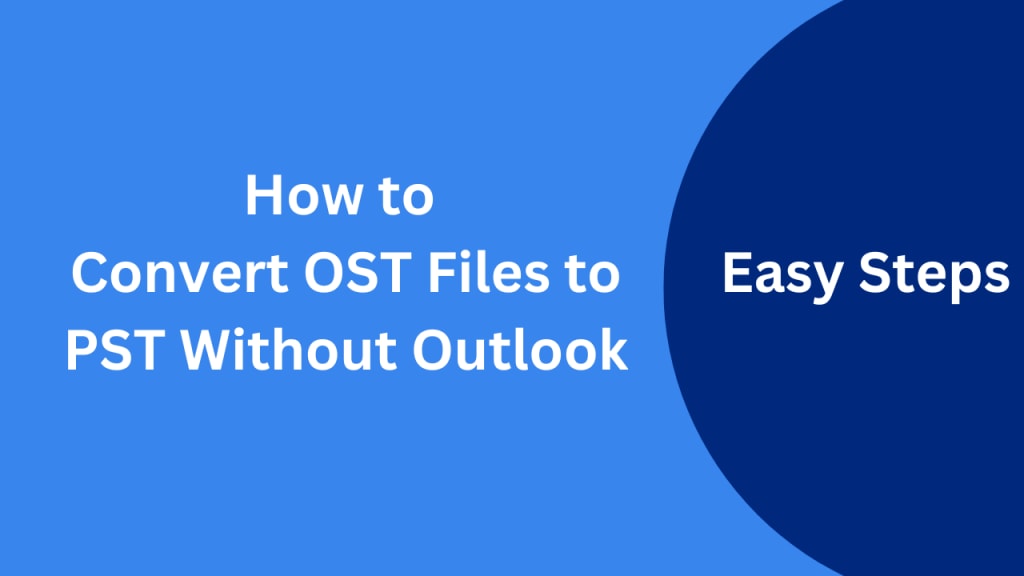How to Convert OST Files to PST Without Outlook in Easy Steps
Learn Best Solutions to Convert Outlook OST Files to PST

Summary: In this blog post, we will explore different methods to convert OST files to PST. We will discuss manual methods such as the archiving method, import-export method, and drag & drop method, as well as a professional method using an OST to PST Converter. Let’s explore the blog by understanding the OST and PST files.
OST and PST are both file formats used by Microsoft Outlook to store emails, contacts, calendars, and other data. OST files are used for offline access to mailbox data, while PST files are used for storing and archiving mailbox data.
3 Manual Methods to Convert OST to PST
There are three free methods for converting Outlook OST files to PST format. We will discuss each in detail. Let’s dive into the first solution.
Method 1: Convert OST files to PST Using Archiving Method
The archiving option is provided in MS Outlook and is free to use.
- Open Microsoft Outlook and go to the File menu.
- Click on the Archive option.
- Select the folder you want to archive (OST file) and choose a location to save the archived PST file.
- Click OK to begin the archiving process.
- Once the archiving process is completed, the OST file will be converted to a PST file.
Method 2: Convert OST to PST Using Import/Export Method
Now, we will export OST data into PST format using the Import/Export feature of Outlook. Follow the given steps.
- Open Microsoft Outlook and go to the File menu.
- Click on Open & Export and then select Import/Export.
- Choose Export to a file and click Next.
- Select Outlook Data File (.pst) as the file type to export to.
- Select the folders you want to export (from the OST file) and choose a location to save the PST file.
- Click Finish to start the export process.
- Once the export process is completed, the OST file will be converted to a PST file.
- Open Microsoft Outlook and create a new PST file (File > New > Outlook Data File).
- Once the new PST file is created, go to the original OST file and select the folders you want to move to the PST file.
- Drag the selected folders from the OST file and drop them into the newly created PST file.
- Manual methods can be time-consuming, especially when dealing with large OST files.
- There is a risk of data loss or corruption when using manual methods, especially if not executed correctly.
- Manual methods may not be suitable for users with limited technical expertise.
- It doesn’t allow users to convert OST files in bulk.
Method 3: Convert OST Files to PST Using Drag & Drop Method
You can also just drag & drop the OST files into PST format by following the below steps.
Disadvantages of Using Manual Methods to Convert OST to PST
Although manual methods are free to use for everyone, there are some disadvantages you should know. Some of the common limitations of converting OST files to PST manually.
If you do not want to be troubled with these limitations, you should use the alternative suggested by the expert. Read the next section to get the best solution for exporting OST files to PST format.
Professional Method to Convert OST to PST
The Microsoft OST to PST Converter is the best solution to convert OST files to PST format with ease. This tool can quickly and accurately convert all the contents of an OST file to a PST file without the risk of data loss or corruption. It also offers advanced features such as selective file conversion and maintaining folder hierarchy. Using this tool, you can import OST to PST, PDF, EML, EMLX, MBOX, MSG, and more. It also imports OST files into Gmail, Yahoo, Office 365, Thunderbird, etc.
Conclusion
While manual methods to convert OST files to PST exist, they have their limitations in terms of time, technical expertise, and potential for data loss. Utilizing a professional OST to PST converter can provide a more efficient and secure way to convert files, ensuring that all data is transferred accurately and without risk. Whether choosing a manual method or a professional tool, it is essential to weigh the pros and cons based on individual needs and requirements.
About the Creator
Enjoyed the story? Support the Creator.
Subscribe for free to receive all their stories in your feed.





Comments
Suman Rawat is not accepting comments at the moment
Want to show your support? Send them a one-off tip.